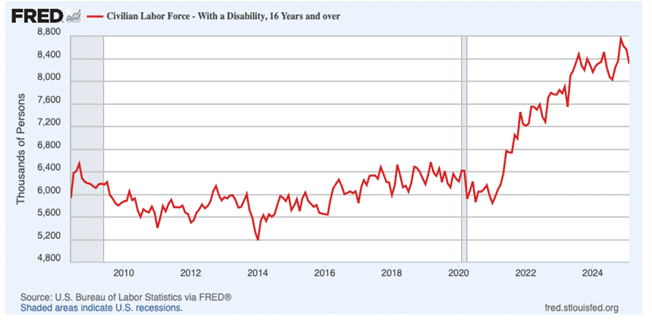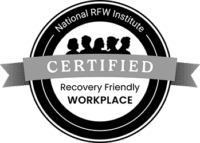A New Partnership Tackles a Growing Health Crisis: Putting Health and Longevity First
Since the COVID-19 pandemic, the health of people across the United States has taken an unexpected and serious turn. Scientists, healthcare teams, and insurance companies are taking notice of a growing trend: more young adults – people in their 20s, 30s, and 40s – are developing chronic illnesses and other serious conditions that were previously more common in older adults. Conditions like heart disease, high blood pressure, diabetes, and other life-altering conditions are now being diagnosed earlier and more often.
According to the Center for Disease Control’s (CDC) Provisional Mortality Statistics (as of July 4, 2024) analyzed by the ICSL team, several categories of disease and health conditions are showing troubling upward trends when both underlying causes of death (UCD) and multiple causes of death (MCD) contributing causes are considered:
- Cardiac and Circulatory Conditions: Deaths linked to heart and circulation-related causes have increased by 8% to 36%, even though mortality from traditional coronary artery disease has declined by 7%.
- Neurological and Nervous System Disorders: Mortality from these conditions has risen by 16% to 39%. Notably, dementia is being diagnosed earlier, with a 22% increase in deaths among adults aged 65 to 74.
- Metabolic and Digestive Diseases: Death rates related to several key metabolic and digestive issues have jumped between 10% to 137%.
- Cancer: Mortality rates for many cancers have increased by 10% to 50%. Exceptions include lung, breast, and colon cancers, which are seeing a decline or plateau.
- External Causes: Deaths resulting from accidents, assaults, and overdoses have risen by 11% to 30%.1
These troubling trends are creating new challenges for the insurance industry and their policyholders. Life, health, disability, and supplemental insurance companies are seeing increased claims, earlier deaths, and policyholders who require care far sooner than expected. To meet this growing need, GoMo Health and the Insurance Collaboration to Save Lives (ICSL) have formed a new strategic ForwardLiving partnership program. Together, they are working with insurers to help policyholders live longer, healthier lives through proactive, personalized health support programs.
A Shift in Health and Longevity
Prior to the pandemic, life expectancy was steadily improving (Arguably stopped improving ~ 2014 period). But according to the CDC data, that progress has reversed. Excess deaths among working-age adults have continued—even as COVID-19 deaths have decreased.2
At the same time, younger people are developing chronic illnesses at a higher rate than ever before. A 2023 CDC report found that more than 6 in 10 U.S. adults now live with a chronic disease, and many of these conditions begin developing in early adulthood.3 These diseases, including obesity, diabetes, and cardiovascular disease, among others, shorten lifespans and greatly reduce quality of life.
It’s not just about how long people live; it’s also about how well they live. This rise in morbidity—the rate of disease and disability—has major consequences, both for individuals and businesses, who incur the costs, but also sustain the lost productivity. As more people get sick at a younger age, insurance companies are feeling the pressure.4 This trend affects every part of the industry:
- Life insurers are seeing more early deaths, which increases the number and size of payouts.
- Disability insurers are dealing with a rise in claims due to chronic illnesses that reduce people’s ability to work.
- Health insurers are covering longer and more expensive treatments.
- Supplemental insurers are receiving more claims related to unexpected hospital stays, treatments, and income loss.
This shift in health outcomes is not only impacting claims—it’s also changing who is participating in the workforce and how.
Disability and Workforce Participation
Recent labor statistics highlight another important trend related to disability and workforce participation.

According to data from the U.S. Bureau of Labor Statistics, the number of Americans aged 16 and older with a disability who are participating in the civilian labor force has risen sharply in recent years. From 2010 to 2019, this number remained relatively stable, hovering between 5.5 million and 6.5 million.
However, following a brief decline at the start of the COVID-19 pandemic in 2020, participation surged beginning in 2021 – reaching over 8.4 million by early 2024, the highest level recorded during the period. While there have been month-to-month fluctuations, the overall trend shows significant growth. This increase may reflect greater workplace accessibility, expanded remote work opportunities, and stronger efforts to promote disability inclusion across industries. It also reinforces the growing need for insurance solutions that support individuals managing chronic illness and disability while remaining active in the workforce.5
A Partnership Built on Prevention and Personalization
That’s where the ForwardLiving program comes in. GoMo Health and ICSL created this partnership to help insurance companies respond to these health trends by offering something different: customized health and wellness programs that focus on prevention and long-term behavior change.
These programs are designed to:
- Encourage healthier lifestyles through education and motivation.
- Support people in managing chronic conditions, like diabetes or heart disease, cancer, or mental health challenges.
- Help members avoid serious complications through early intervention.
- Reduce stress, improve sleep, and promote emotional well-being, including support for those coping with mental health issues or the emotional impact of a cancer diagnosis.
“We’re helping insurers invest in the long-term health of their policyholders,” said Bob Gold, Chief Behavioral Technologist at GoMo Health, “This partnership is about helping people live higher quality lives, not just longer.”
These efforts give insurance providers a way to shift from reactive to proactive care – improving health outcomes while reducing costs across their business.
Why Morbidity Matters
The World Health Organization (WHO) reports that 74% of all global deaths are caused by chronic diseases.6 These conditions also contribute to long-term disability, lower productivity, and greater dependence on medical care. As insurers create plans for the future, it’s no longer enough to focus solely on mortality rates—how long people live. They must also plan for morbidity, considering the quality of life for people with chronic illnesses during their lifetimes, and what that means for their ability to work, care for families, and live independently, in addition to the costs associated with these levels of care for people earlier in life.
The ForwardLiving program directly supports this need by giving insurers a way to engage with members earlier, support better lifestyle choices, and offer meaningful, ongoing health support—not just a policy. “This is more than a collaboration—it’s a call to action,” said Mitch Bagley, Board Member at Insurance Collaboration to Save Lives (ICSL). “We have a chance to change the trajectory of health for generations to come.” The ForwardLiving program represents an innovative approach to health and risk management. With the right programs in place, insurers have a chance to make a real impact for the people and communities they serve, as well as their business model.
By tackling rising morbidity and shifting expectations about health and longevity, this partnership could reshape how insurance works for the better.
References:
- Centers for Disease Control and Prevention. Provisional Mortality Statistics, 2018–2024: Underlying (UCD) and Contributing (MCD) Causes of Death. 4 July 2024, www.cdc.gov/nchs/nvss/vsrr/provisional-tables.htm
- Centers for Disease Control and Prevention. (2024, February). Excess Deaths Associated with COVID-19. https://www.cdc.gov/nchs/nvss/vsrr/covid19/excess_deaths.htm
- Centers for Disease Control and Prevention, National Center for Chronic Disease Prevention and Health Promotion. (2023). Chronic Diseases in America. https://www.cdc.gov/chronicdisease
- JAMA Health Forum. (2023, March). Long-Term Risks of Post-COVID Chronic Illnesses. https://jamanetwork.com/journals/jama-health-forum
- U.S. Bureau of Labor Statistics. Civilian Labor Force – With a Disability, 16 Years and Over. FRED, Federal Reserve Bank of St. Louis, Apr. 2024, https://fred.stlouisfed.org/series/LDISCN16.
- World Health Organization. (2023). Noncommunicable Diseases Fact Sheet. https://www.who.int/news-room/fact-sheets/detail/noncommunicable-diseases







Find Us Online